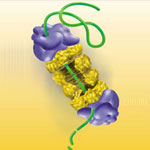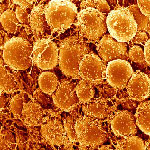
As people around the world mark Earth Day (April 22) with activities that protect the planet, our cells are busy safeguarding their own environment.
To keep themselves neat, tidy and above all healthy, cells rely on a variety of recycling and trash removal systems. If it weren’t for these systems, cells could look like microscopic junkyards—and worse, they might not function properly. Scientists funded by the National Institutes of Health are therefore working to understand the cell’s janitorial services to find ways to combat malfunctions.
Read more about how cells take out the trash and handle recycling in this Inside Life Science article.


